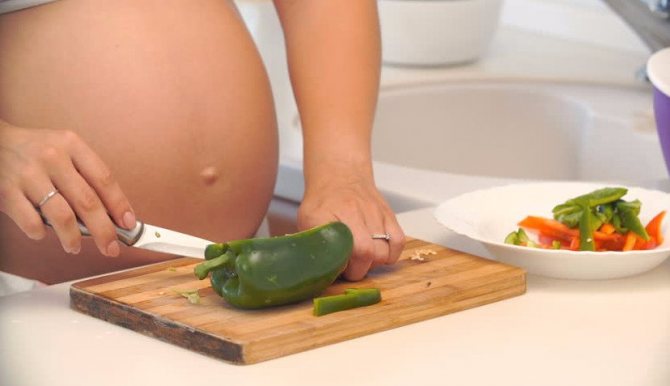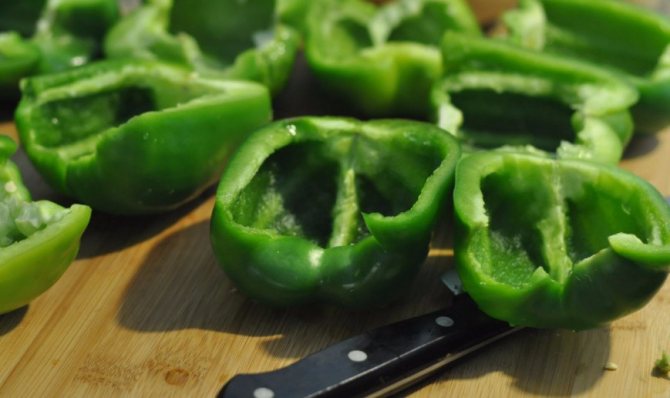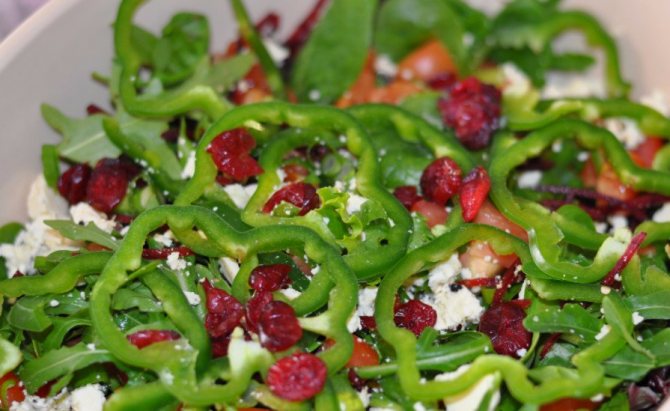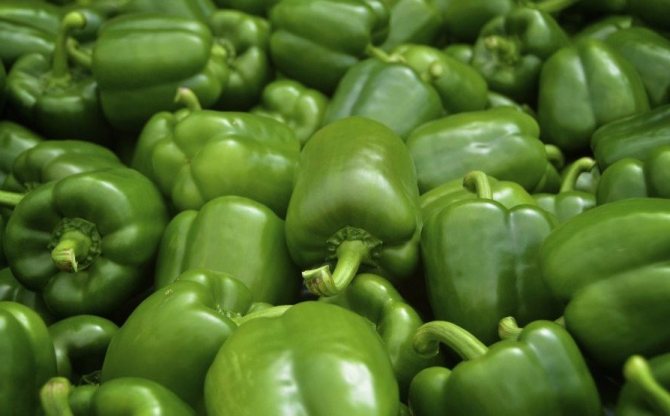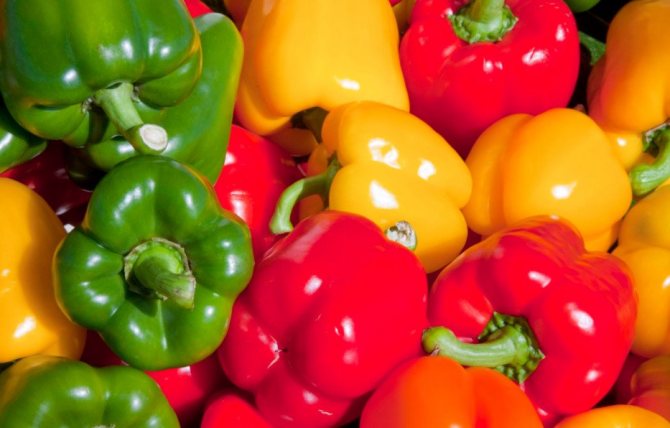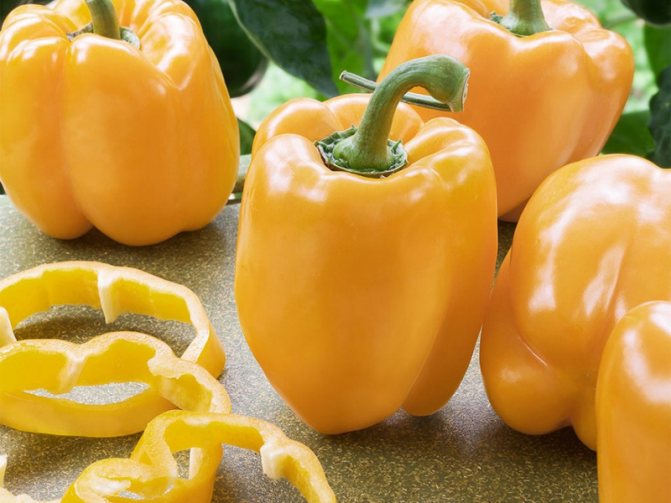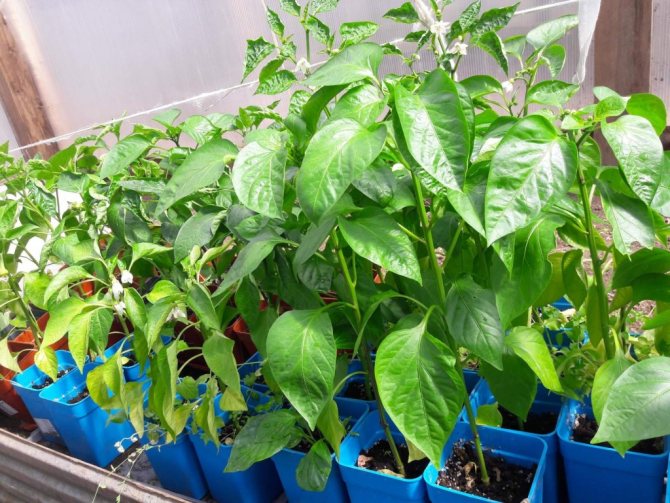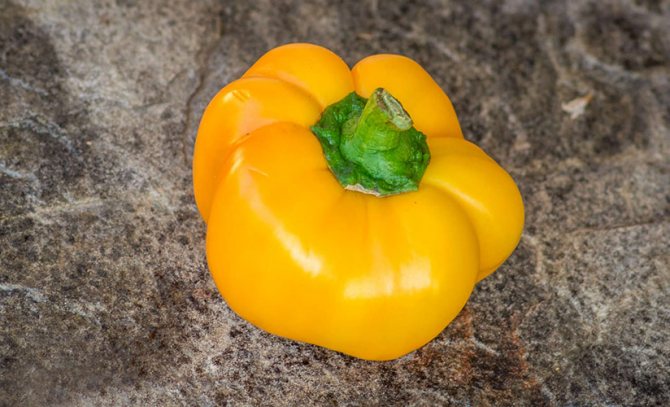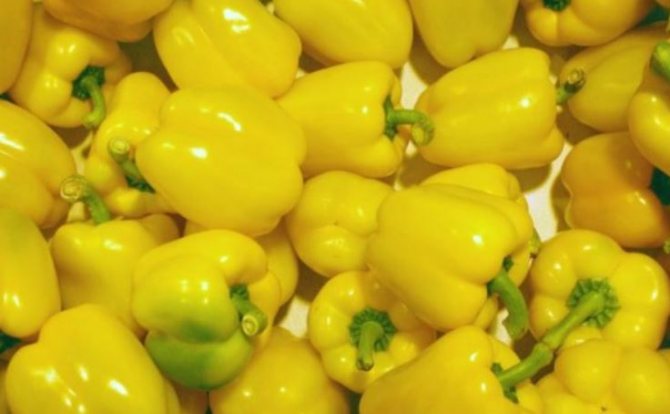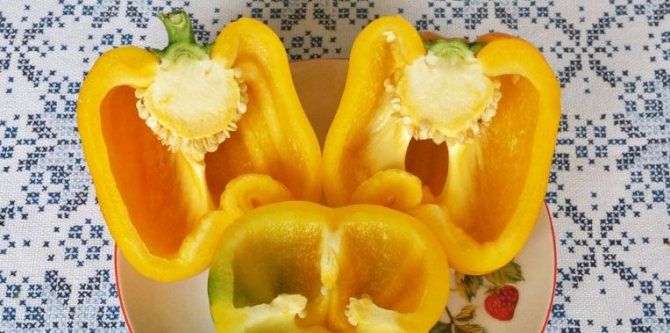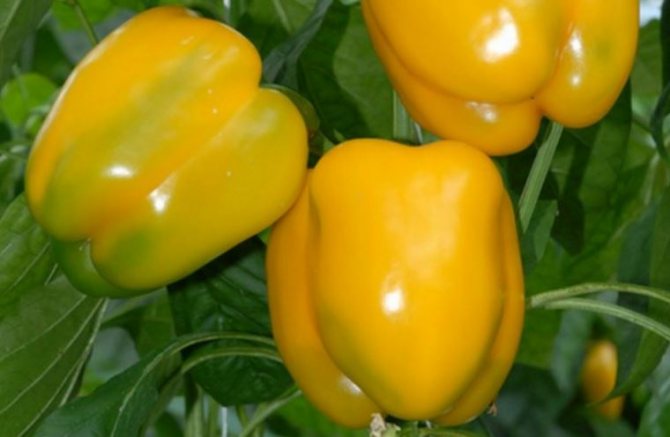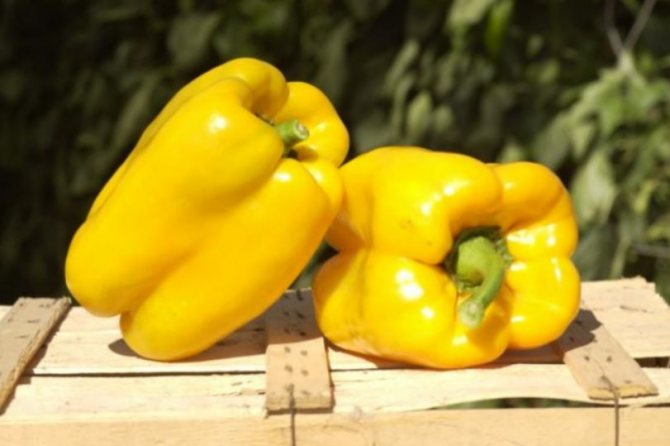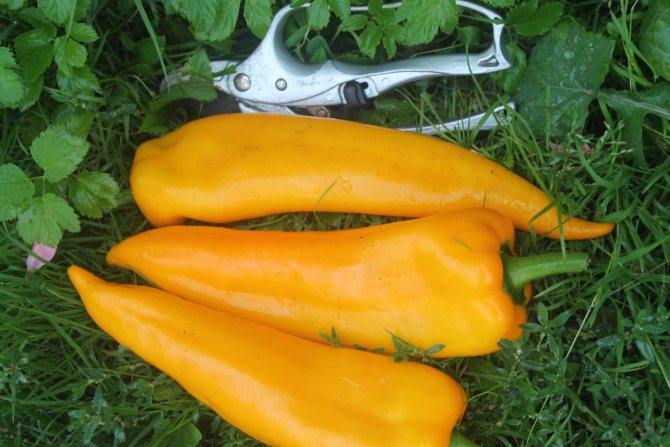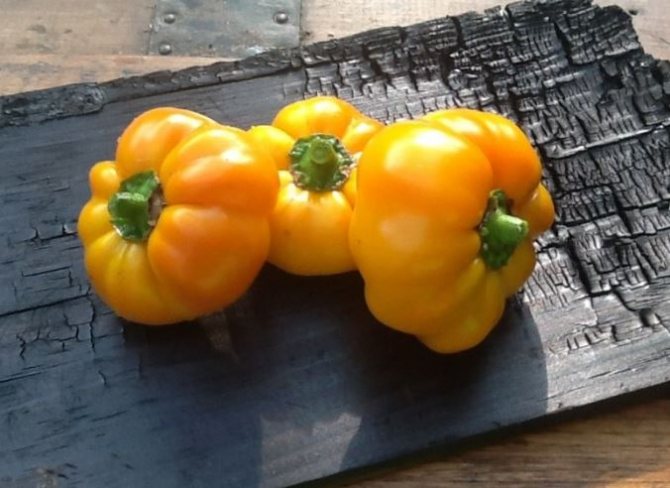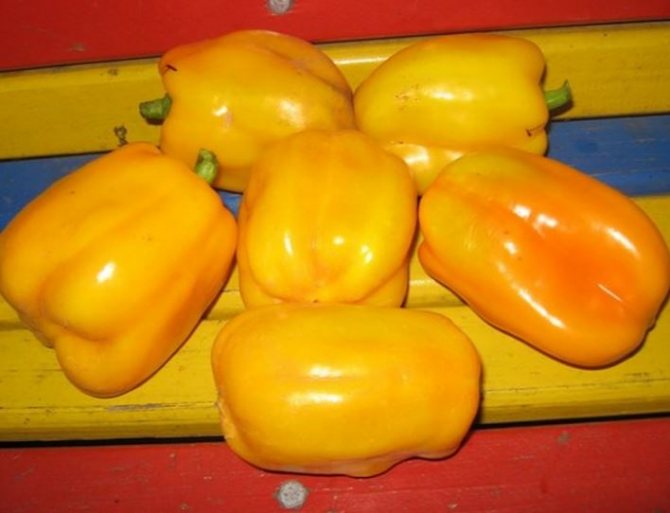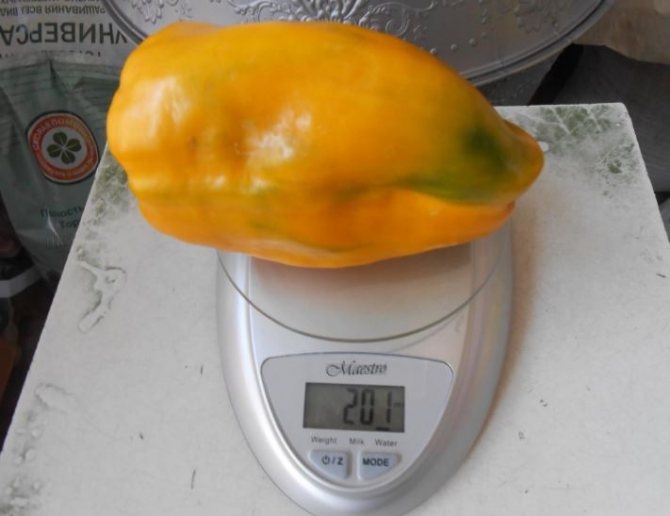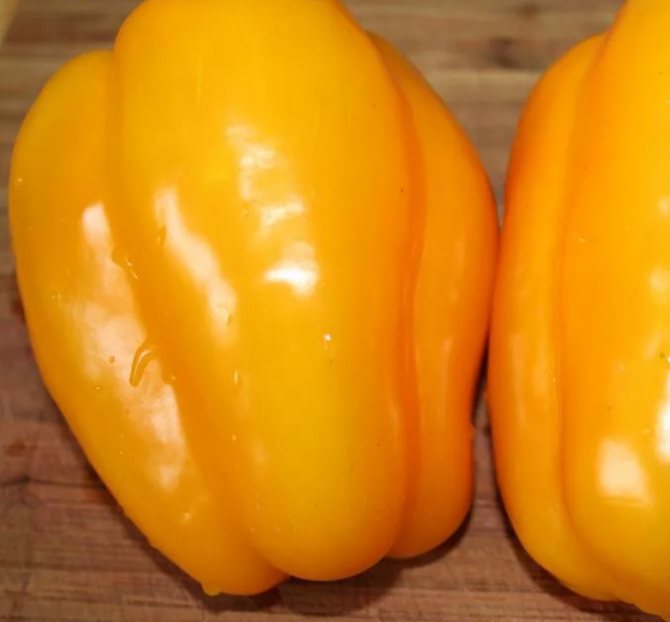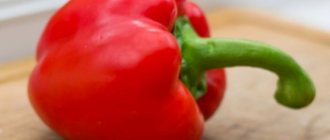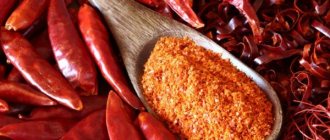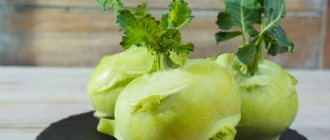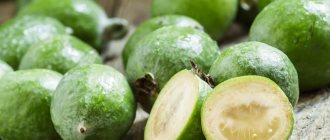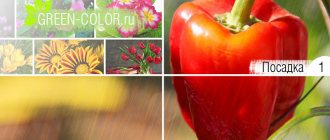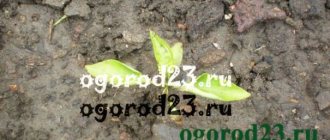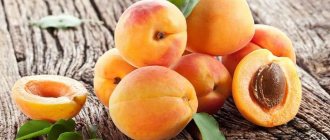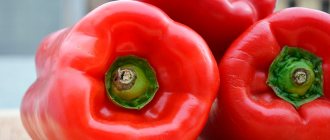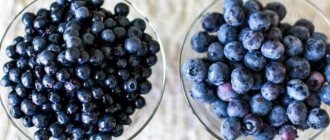The ability to grow green bell peppers on open ground and in greenhouses is relevant for gardeners who want to fill their diet with a maximum of useful vitamins and microelements.
It is this type of sweet pepper that is characterized by a reduced calorie content (about 33 kcal per 100 g of product) and is most often used in dietary nutrition. The grown fruits are distinguished by their external beauty, characteristic crunchiness, well-balanced sweet taste, as well as the presence of a real storehouse of useful microelements. This is especially true of vitamins C, A and E, which are essential for the body.
Composition and properties
The vegetable has the richest composition vitamins and minerals, capable of providing the body with almost all the necessary nutrients.
Most of all in sweet pepper fruits pyridoxine, ascorbic and folic acids.
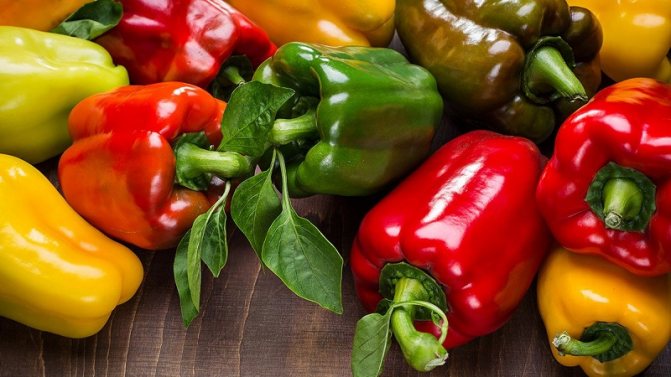
Pyridoxine activates metabolic processes, participates in the formation of erythrocytes, processes of excitation and inhibition in the central nervous system, positively affects the condition of the skin, prevents the development of anemia.
Ascorbic acid (vitamin C) strengthens capillaries, prevents their fragility, normalizes the functioning of the nervous system, and helps the absorption of iron.
Folic acid participates in protein synthesis and in the processes of cell division and multiplication. An essential element for pregnant women.
Other vitamins found in bell peppers:
- vitamin A (sharpens vision);
- beta-carotene (strengthens the immune system);
- PP (regulates blood cholesterol);
- E (antioxidant);
- K (for the restoration and formation of bone tissue).
Minerals:
- potassium - content in yellow pepper - 202 mg, prevents the accumulation of sodium salts;
- calcium - supports the functioning of the nervous system, strengthens bone tissue;
- phosphorus - participates in the processes of cell division;
- magnesium - regulates the distribution of calcium in tissues;
- sodium - supports neuromuscular regulation;
- iron - participates in the formation of hemoglobin in the blood;
- copper - promotes the formation of red blood cells, the body's resistance to infections;
- manganese - participates in glucose metabolism, maintaining optimal blood sugar levels;
- selenium - needed for the full functioning of the heart;
- zinc - is part of erythrocytes and leukocytes, promotes wound healing.
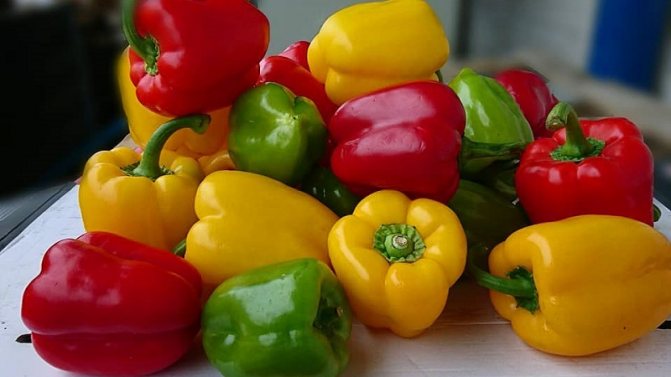

The content of vitamins and minerals in sweet bell peppers may vary slightly depending on the color of the fruit.
Reference. Yellow pepper leads among the rest in terms of potassium content. It is he who is most useful for the elderly.
KBZHU
The question of how many calories are in bell pepper worries those who adhere to a diet.
The content of proteins, fats and carbohydrates is shown in the table per 100 g of product:
| Substances and calories | In grams | % Of the daily value |
| proteins | 1,45 | 2 |
| fats | 0,16 | 0 |
| carbohydrates | 5,59 | 2 |
| Caloric content (red) 26.8 kcal (yellow) 27.2 kcal (green) 23.2 kcal | 1 | |
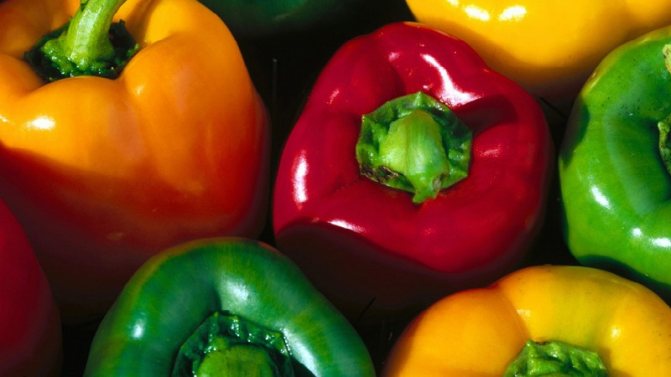

Benefit and harm
Bell pepper has a unique composition... Why this vegetable is useful:
- increased immunity;
- prevention of oncological diseases;
- improved blood composition;
- normalization of appetite and improvement of the digestive system;
- support of the nervous system, prevention of depressive conditions;
- normalization of blood pressure;
- improving memory;
- maintaining visual acuity.
Harm from use can occur with diseases gastrointestinal tract, in particular, gastritis.
Gastroenterologists agree that with this disease it is not necessary to completely exclude the vegetable from the diet. But you need to use it with caution. The presence of hard fiber in the product interferes with rapid digestion and leads to irritation of the mucous membrane. To soften the effect of sweet peppers, they are heat treated.
The best option for a meal for people suffering from gastric ailments - steamed peppers. It is not recommended to use a raw vegetable for gastritis and ulcerative lesions of the mucous membrane.
If the disease is accompanied by bouts of heartburn, high acidity, pepper will have to be excluded from the diet due to the high content of vitamin C in fruits.
Reference. It is recommended to limit the consumption of sweet pepper to people with hypertension, gout, kidney and liver diseases.
Growing rules
Pepper belongs to nightshade crops, which means that the quantity and quality of its fruits primarily depends on the condition of the root system, the composition of the soils used, the regularity of watering and the introduction of additional fertilizers. The optimal period for sowing seeds of future seedlings depends on the climatic characteristics of a particular region. As a rule, sowing of seeds is carried out in the second half of February. An exception is the southern regions with a hot climate, where sowing can be postponed until early March. In any case, the seeds should be planted in the ground no later than the third decade of March.
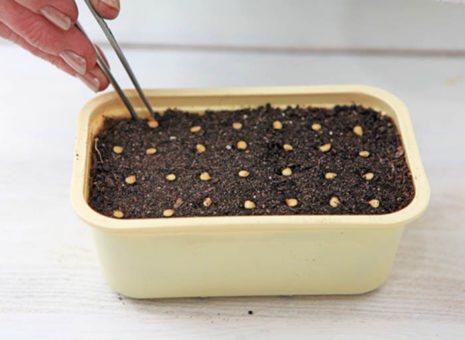

In order for seedling sprouts to appear above the soil level earlier, and by the time of transplantation to permanent soil, the seedlings have time to germinate and grow strong enough, the seeds must be soaked in warm water for 25 - 30 minutes until they begin to swell. A worthy alternative is to place the seeds between layers of damp cotton cloth or gauze, which is moistened by spraying from a spray bottle. The work itself is carried out 2 weeks before sowing the seeds, although the first shoots should appear already on the 4th - 5th day.
It is recommended to plant seeds to a depth of no more than 1 - 1.5 cm, the distance between the holes should be about 4 - 5 cm, which will protect the plants themselves from possible damage to the root system when diving. If all the work is carried out correctly, then the first shoots will delight gardeners in 2 - 4 days. In the future, the cultivation of seedlings consists in a moderate but regular supply of soil with moisture. In this case, the water used must necessarily be warm, with a temperature of at least 28 - 30 degrees.
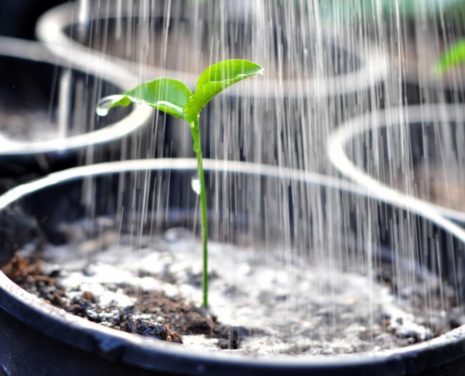

Within two weeks before the planned transplantation of seedlings to a permanent place of growth, seedlings must be hardened daily by temporary removal to the street. The time spent outdoors should be increased gradually so that the tops do not get burned from direct sunlight. It is not worth planting seedlings in a permanent place until the third decade of May, when the risk of a return of night spring frosts is minimal.
Of the mandatory requirements for caring for the bushes, it is worth highlighting the pinching of their lateral shoots, the partial tying of the bushes to an additional stable support, as well as mulching of the root soil in order to prevent excessive evaporation of moisture under the hot sun. As a fertilizer, organic and mineral complexes of any type can be used, except for those containing potassium chloride.
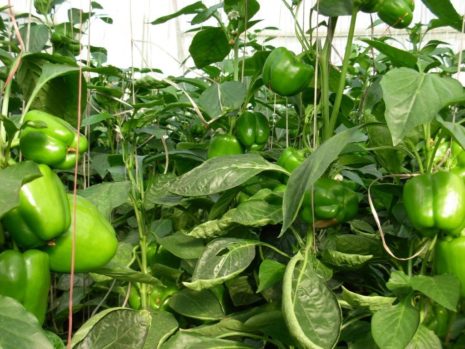

How the benefits and harms change depending on the color of the bell pepper
Do not think that the composition of multi-colored peppers is identical. and they differ only in the predominance of one or another pigment. There is also a difference in the chemical composition of the fruit.
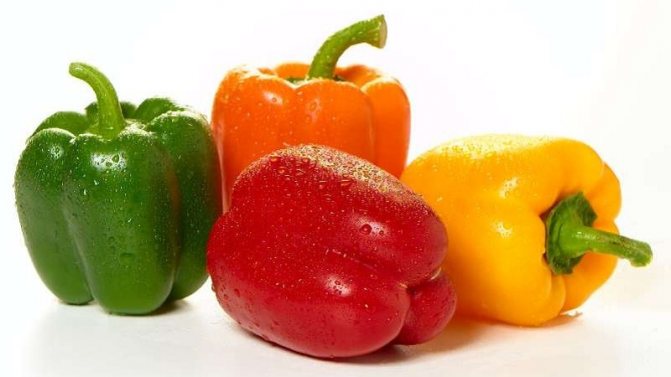

Yellow
Yellow fruits are rich in potassium, phosphorus and carotene... This vegetable brings the maximum benefit during the period of mental stress. It is recommended to be used by students before exams, as well as people of intellectual work.
Yellow pepper improves memory and concentration, relieves depression and insomnia.
For the elderly, yellow fruits are valuable its positive effect on the cardiovascular system.
Yellow bell pepper included in the diet as an adjunct in the treatment of anemia.
Red
Red fruits contain the highest amount of vitamins A and C... A vegetable of this color is beneficial for the immune system and maintaining visual acuity.
Red fruits contain lycopene, one of the most powerful antioxidants. This pepper is used to prolong the youth of the body. Lycopene slows down cell aging.
Of the potential risks - possible allergic reactions.
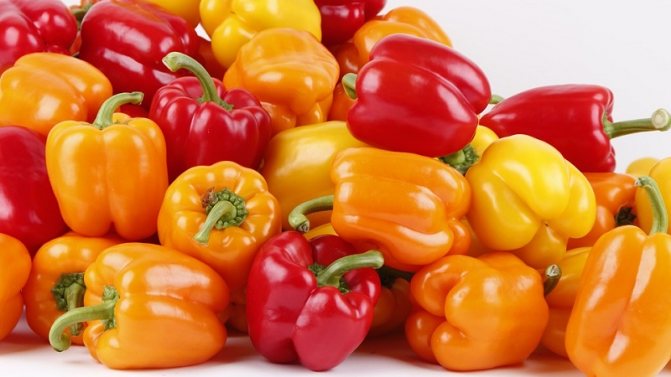

Orange
In terms of vitamin A content, it lags slightly behind its red counterpart, but ahead of this indicator carrots. Due to its composition, it successfully removes free radicals from the body, supports regenerative processes, and increases the level of good cholesterol.
May cause allergies.
Green
Diet variety of bell pepper... Green fruits are characterized by an increased content of phytosterols, which are necessary for the normalization of fat metabolism. Regular consumption of green bell pepper speeds up metabolism, removes toxins, strengthens the walls of blood vessels.
The iron contained in green fruits protects the body from bacteria and participates in the synthesis of hemoglobin.
But the most valuable thing in green fruits is their use reduces the risk of developing malignant tumors.
Reference. Green peppers are especially useful for preventing breast cancer.
Contraindications
Green bell pepper is not advisable for people suffering from:
- angina pectoris;
- tachycardia;
- hypertension;
- gastritis;
- increased acidity of gastric juice;
- stomach and duodenal ulcer;
- colitis;
- kidney failure;
- liver pathologies;
- insomnia;
- epilepsy;
- hemorrhoids.
Some people, when overeating, develop an allergic reaction, nausea, vomiting, diarrhea, and stomach pain.
Influence of bell pepper on women's health
Since most women are subject to frequent mood swings, they it is worth including bell peppers in your daily diet to avoid sudden emotional changes... Peppers of any color promote the production of serotonin, the hormone of happiness.
You can get your portion of joy by eating a few pieces of chocolate. But there is a risk of gaining weight from chocolate, but not from pepper. So this is a great option for those who are struggling with excess weight.
A huge benefits from regular consumption of the vegetable for the condition of the skin, nails and hair... The trace elements contained in the vegetable have a beneficial effect on the appearance and promote rejuvenation at the cellular level. For this purpose, it is better to use yellow and red fruits.
The folic acid content makes the vegetable indispensable on the table of expectant mothers. for the formation of a healthy fetus.
Additional benefits of sweet peppers for pregnant women:
- thinning blood and preventing varicose veins;
- slowing down the synthesis of hemoglobin with its increased level;
- strengthening of bone tissue.
Effect on the male body
The problem of many modern men is early baldness. In the fight against it, bell pepper is effective: the vegetable helps to strengthen the hair structure.
The benefits of pepper for men:
- beneficial effect on potency and sperm production;
- activation of brain activity and thought processes;
- increased efficiency;
- getting rid of chronic fatigue and withdrawal from depressive conditions;
- general strengthening of the body.
Pests
In order for the crop to be stable, it is necessary to protect the plant from all kinds of pests and diseases.If you do not treat plants for various diseases in a timely manner and do not destroy insects, you can lose a large amount of the crop.
The main pests:
- Aphid. The most common and dangerous pest. It settles on the leaves and sucks the juice out of them. It multiplies well in a greenhouse and in warm weather. If you do not start a timely fight against aphids, you can lose the entire crop. To destroy aphids, the bushes are sprayed with solutions of wood ash and tobacco dust, and the treatment is carried out at intervals of 5 days.
- Whitefly. This is an extremely common and very prolific pest that feeds on the sap of the bushes, as a result of which they weaken. You can find the whitefly on the bottom of the leaf. If it is not enough, you can simply wash off with water. In another case, spraying is carried out with special means or traps are used. For prevention purposes, the soil is constantly cleaned of plant residues, and the greenhouse is disinfected with karbofos.
- Slug. Slugs are capable of doing decent harm to the plant, eating huge holes in its leaves and fruits. The pest is especially active at night. To prevent the appearance of slugs, it is necessary to keep the beds clean and treat the plants with tobacco dust. Also, the pest can be scared off by mustard and ground pepper, scattered into the soil.
Sweet pepper for children
You can introduce a vegetable into a children's diet from an early age.... But children under one year old are not recommended to give fresh pepper - only as part of vegetable soups, boiled or baked.
You can acquaint a baby with a raw vegetable at the age of 1.6-1.8 years... It is better to offer your child a yellow, red or orange vegetable. He will definitely not like green, because it has a specific bitter aftertaste.
Consider the nuances when choosing peppers for a children's menu.:
- introduce the baby to the vegetable only in season;
- choose peppers grown in the open field with a minimal use of nitrates (ideally, without them at all);
- preference for small-sized fleshy fruits;
- check carefully for cracks, dark spots, rot.
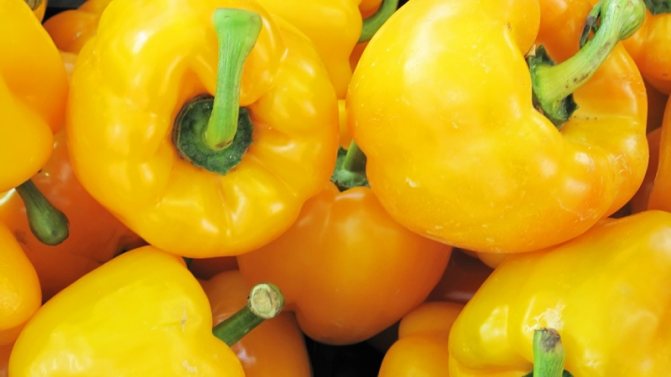

The benefits of sweet peppers for children:
- improves digestion;
- reduces the effects of increased eye strain (relevant for schoolchildren and gadget lovers);
- enhances immunity;
- helps to strengthen bones.
Interesting facts about other types of pepper:
Unique properties of allspice peas
The benefits and harms of hot pepper for men
What is white pepper and how is it used in cooking
Overview of varieties
Green bell peppers do not taste bitter during full ripening, which distinguishes them from their counterparts of a different color. Upon reaching technical maturity, the fruits lose some of their beneficial properties.
Green miracle
The fruit of this pepper is dark green in color. Well suited for cultivation in plastic greenhouses and outdoors. It grows to about 80 cm. From planting to harvesting, 75–85 days should pass. Its fruit grows up to 12 cm long, has the shape of a cube with three or four sides, rather fleshy with thick walls of 5-7 mm.
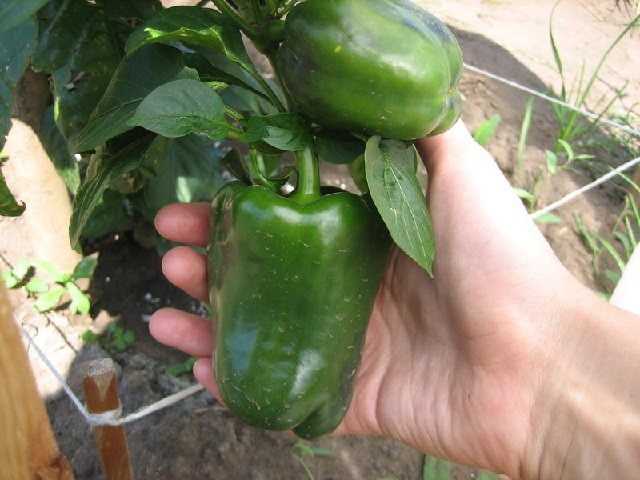

Nikitich
This is an early variety of pepper. Fruiting in 95-100 days after germination. Its fruits are trapezoidal or almost square, do not have transverse veins. The variety is capricious, therefore, during the setting of flowers, it needs intensive feeding. The average weight of a vegetable is 120 g, the walls reach 6 mm.
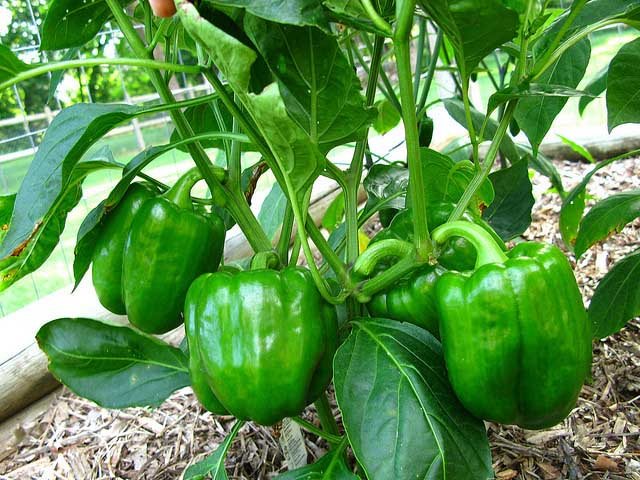

Atlantic F1
Hybrid pepper belongs to the early varieties, the first fruits appear in 90-100 days. Its fruits are large, up to 500 g. The walls are 9 mm thick. This species rarely gets sick with the tobacco mosaic virus. It can be grown both outdoors and in greenhouses.
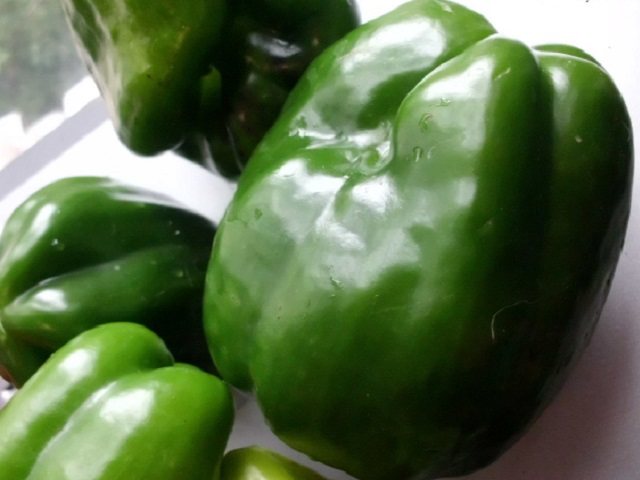

Giant Dutch
A very early variety, it takes 80 days to ripen. The bush grows powerful in height up to 70 cm. Fruits are rectangular in shape, 11 × 10 cm. It has a pronounced taste without bitterness. Wall thickness 7 mm.
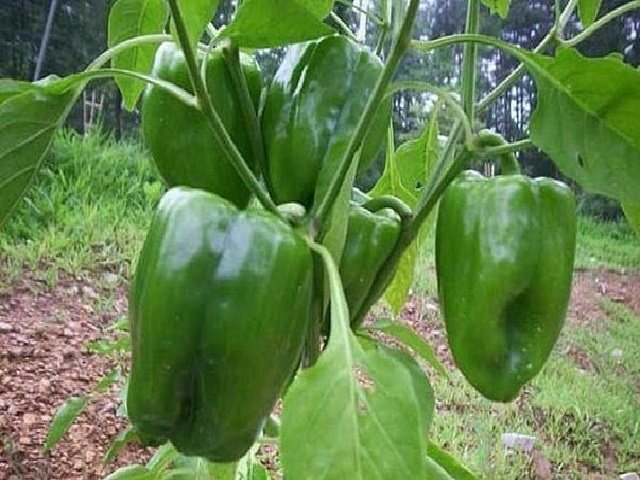

Viking
This is a small green pepper, its fruits weigh no more than 100 g. It takes 100 days to ripen. This variety is very productive. The taste of the pulp is devoid of even a hint of bitterness. This variety is unpretentious and disease resistant.


Pomegranate
Long pepper, green. Upon reaching technical maturity, after 130 days, it turns red. It is a small pepper with an average weight of only 35 g. It is a cold-resistant variety. It is grown outdoors.
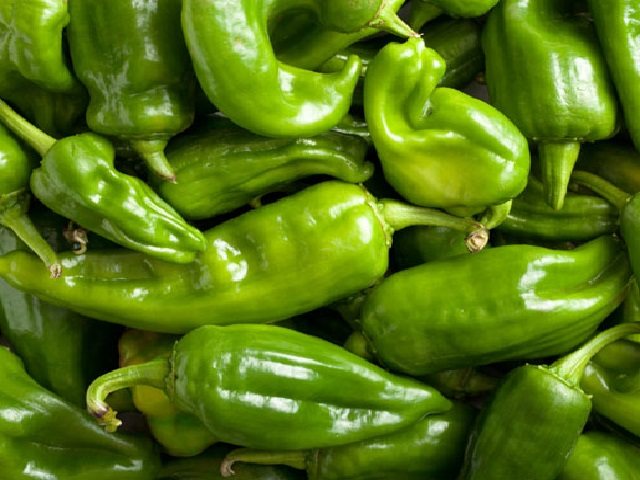

Ermak
The bushes of this variety have a small height up to 35 cm and a large bushiness. This variety of green peppers is recommended to be tied up because the abundance of fruit can break it. The fruit grows up to 12 cm in length and up to 100 g by weight. The walls are about 5 mm thick. The pulp is juicy.
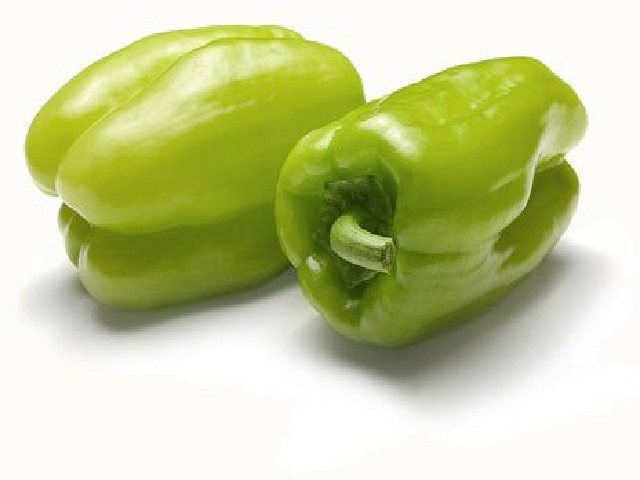

Cup to the winner
Aging takes 115 days. It is a dark green pepper weighing 170 g, cylindrical in shape. Differs in large ribbing.
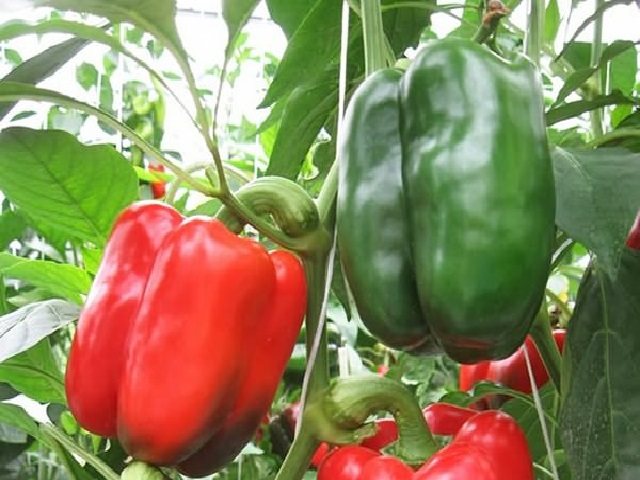

Titanium
Has a glossy surface. By weight reaches 250 g. On one bush grows up to 8 pieces. peppers. The thickness of the pulp is 7 mm.
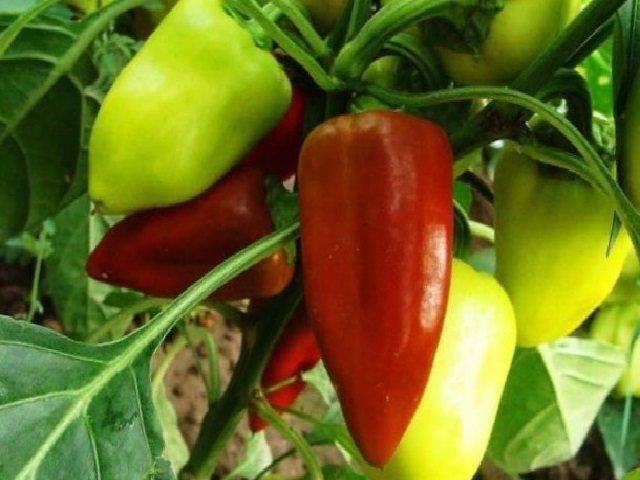

Marshmallow
The late variety is considered one of the best in taste. It has a round shape with a length of 12 cm. The weight of one pepper is 300 g. The pulp is 8 mm, juicy and sweet. This species is drought-resistant, unpretentious, suitable for long-term storage.
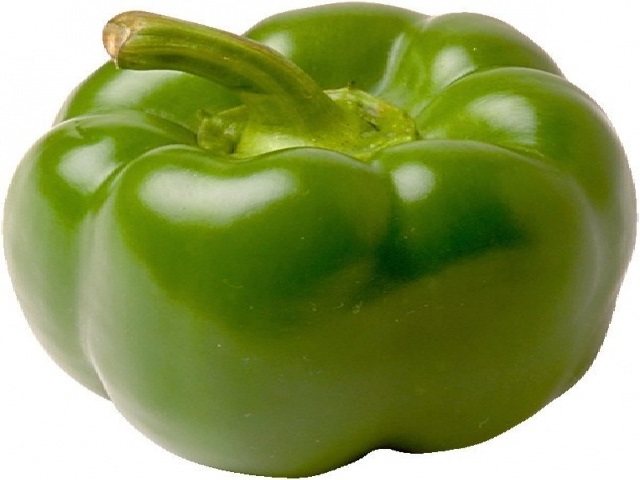

Norms and rules of use
The optimal amount of the product consumed per day is 150-200 g, these are 2-3 medium-sized fruits. With the risks of allergic reactions, the daily rate is recommended to be reduced to 70-80 g (1 fetus).
It is better to eat peppers fresh. - so it retains the entire vitamin composition. During heat treatment, the vegetable loses a significant part of its nutrients, but gains excellent taste.
Recommendation. Make up your diet so that dishes with fresh bell pepper and vegetables after heat treatment are present in equal proportions.
Check the quality of the vegetable before buying and eating... Criteria:
- the elasticity of the fetus;
- freshness of the tail - it should be green and not wilted;
- smoothness and shine of the surface;
- dry skin and lack of plaque on it.
Storing green peppers
Fresh vegetables are stored for no more than a week in the refrigerator. To preserve them longer, it is recommended to marinate or freeze.
Freezing
For salads, stews, soups, the pods are washed, peeled and chopped before freezing. For lovers of stuffing. You do not need to cut the pods. They remove the stalk and seeds and freeze them whole. Almost all vitamins and minerals are preserved in a frozen vegetable. You cannot defrost it in water, as the pepper will lose most of the useful elements. Repeated freezing is inadmissible. Freeze in small portions.
Testimonials
We suggest that you familiarize yourself with the reviews on the use of yellow bell pepper.
Elena Kosheleva, mother on maternity leave: “I didn't really like bell peppers before pregnancy. She ate in a Greek salad, but without enthusiasm. I liked the color palette of the salad, which was given to the dish by colorful vegetables. But in the third month of gestation, she sharply changed her opinion about him. Especially leaned on yellow fruits. I noticed how absent-mindedness and tearfulness, characteristic of pregnant women, gradually disappear. I began to get enough sleep, stopped being afraid of childbirth. In terms of strengthening the nervous system, the vegetable helped me a lot. I will not say about the beauty of nails and hair, but there were no big problems with that. "
Victor, 35 years old: “I can say from my own experience about the benefits of bell pepper for concentration and increasing efficiency. During periods of high workload, when you need to close several orders in a short time, I prepare myself a pepper bomb - a salad with several types of bell peppers. It helps. I hand over everything on time. Fatigue is minimal. True, the appetite rises at times. "
Nikolay, a young pensioner: “The fact that only women do not want to grow old is not true. Everyone is afraid of old age.I, as I can, run away from her in my 62 years. In the morning I run away in the park, in the evening I brush it off with dumbbells. And at lunch I found a way to move away from her - every other day I eat a large yellow pepper. A familiar therapist advised. I must admit, I feel cheerful. Got rid of heart problems. They were not critical. But still there were. "

